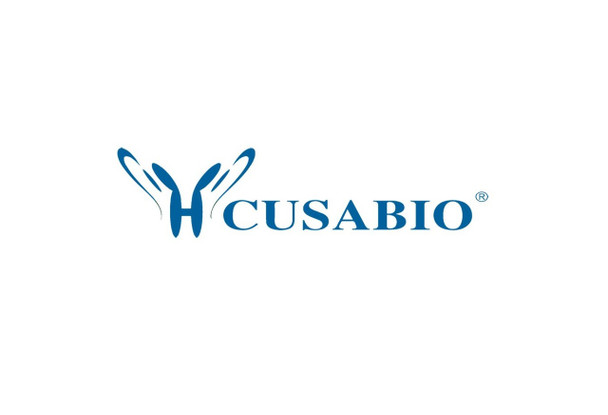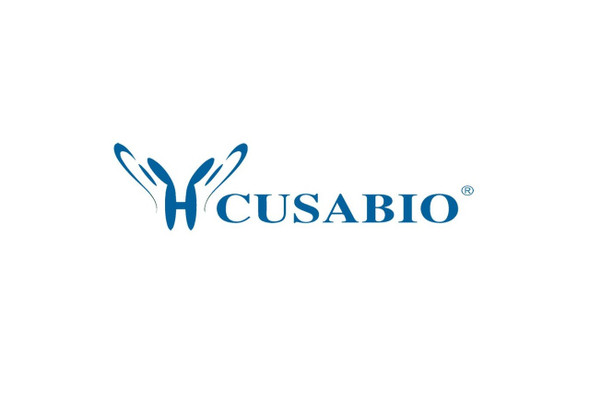Cusabio Human Recombinants
Recombinant Human Hepatitis B virus X-interacting protein (HBXIP) | CSB-EP010161HU
- SKU:
- CSB-EP010161HU
- Availability:
- 13 - 23 Working Days
Description
Recombinant Human Hepatitis B virus X-interacting protein (HBXIP) | CSB-EP010161HU | Cusabio
Alternative Name(s): Hepatitis B virus X-interacting protein
Gene Names: HBXIP
Research Areas: Cell Biology
Organism: Homo sapiens (Human)
AA Sequence: MEATLEQHLEDTMKNPSIVGVLCTDSQGLNLGCRGTLSDEHAGVISVLAQQAAKLTSDPTDIPVVCLESDNGNIMIQKHDGITVAVHKMAS
Source: E.coli
Tag Info: N-terminal GST-tagged
Expression Region: 1-91aa
Sequence Info: Full Length
MW: 36.6 kDa
Purity: Greater than 90% as determined by SDS-PAGE.
Relevance: As part of the Ragulator complex it is involved in amino acid sensing and activation of mTORC1, a signaling complex promoting cell growth in response to growth factors, energy levels, and amino acids. Activated by amino acids through a mechanism involving the lysosomal V-ATPase, the Ragulator functions as a guanine nucleotide exchange factor activating the small GTPases Rag. Activated Ragulator and Rag GTPases function as a scaffold recruiting mTORC1 to lysosomes where it is in turn activated. When complexed to BIRC5, interferes with apoptosome assembly, preventing recruitment of pro-caspase-9 to oligomerized APAF1, thereby selectively suppressing apoptosis initiated via the mitochondrial/cytochrome c pathway. Down-regulates hepatitis B virus (HBV) replication.
Reference: "Cloning and characterization of a novel hepatitis B virus x binding protein that inhibits viral replication." Melegari M., Scaglioni P.P., Wands J.R. J. Virol. 72:1737-1743(1998)
Storage: The shelf life is related to many factors, storage state, buffer ingredients, storage temperature and the stability of the protein itself. Generally, the shelf life of liquid form is 6 months at -20?/-80?. The shelf life of lyophilized form is 12 months at -20?/-80?.
Notes: Repeated freezing and thawing is not recommended. Store working aliquots at 4? for up to one week.
Function: As part of the Ragulator complex it is involved in amino acid sensing and activation of mTORC1, a signaling complex promoting cell growth in response to growth factors, energy levels, and amino acids. Activated by amino acids through a mechanism involving the lysosomal V-ATPase, the Ragulator functions as a guanine nucleotide exchange factor activating the small GTPases Rag. Activated Ragulator and Rag GTPases function as a scaffold recruiting mTORC1 to lysosomes where it is in turn activated. When complexed to BIRC5, interferes with apoptosome assembly, preventing recruitment of pro-caspase-9 to oligomerized APAF1, thereby selectively suppressing apoptosis initiated via the mitochondrial/cytochrome c pathway. Down-regulates hepatitis B virus (HBV) replication.
Involvement in disease:
Subcellular Location: Cytoplasm, Lysosome
Protein Families: LAMTOR5 family
Tissue Specificity: Highly expressed in skeletal and cardiac muscle, followed by pancreas, kidney, liver, brain, placenta and lung. Elevated levels in both cancerous and non-cancerous liver tissue of patients with chronic HBV infection compared with hepatic tissue without HBV infection.
Paythway: mTORsignalingpathway
Form: Liquid or Lyophilized powder
Buffer: If the delivery form is liquid, the default storage buffer is Tris/PBS-based buffer, 5%-50% glycerol. If the delivery form is lyophilized powder, the buffer before lyophilization is Tris/PBS-based buffer, 6% Trehalose, pH 8.0.
Reconstitution: We recommend that this vial be briefly centrifuged prior to opening to bring the contents to the bottom. Please reconstitute protein in deionized sterile water to a concentration of 0.1-1.0 mg/mL.We recommend to add 5-50% of glycerol (final concentration) and aliquot for long-term storage at -20?/-80?. Our default final concentration of glycerol is 50%. Customers could use it as reference.
Uniprot ID: O43504
HGNC Database Link: HGNC
UniGene Database Link: UniGene
KEGG Database Link: KEGG
STRING Database Link: STRING
OMIM Database Link: OMIM









